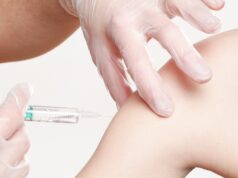
The Heart Rhythm Society (HRS), The American College of Cardiology (ACC), and the American Heart Association (AHA) have released a joint document dealing with the impact of COVID-19 on electrophysiology.
Published online in Heart Rhythm by Dhanunjaya Lakkireddy (Kansas City Heart Rhythm, Kansas, USA) and colleagues, the guidance identifies the potential risks of exposure to patients, allied health care staff, industry representatives and hospital administrators. It describes the impact of COVID-19 on cardiac arrhythmias and methods of triage based on acuity and patient comorbidities. The societies also provide advice for managing invasive and non-invasive electrophysiology procedures, clinic visits and cardiac device interrogations, and discuss resource conservation and the role of tele-medicine in remote patient care along with management strategies for affected patients.
Lakkireddy et al write: “Electrophysiologists play an important role in cardiovascular health, with more than 40% of cardiology encounters being arrhythmia-related. In a recent report from Wuhan, China, 16.7% of hospitalised and 44.4% of ICU patients with COVID-19 had arrhythmias. In addition, there have been anecdotal reports of patients experiencing late myocardial dysfunction, as well as cardiopulmonary arrest with pulseless electrical activity or ventricular fibrillation during the recovery phase of their pulmonary illness.”
They also point out that COVID-19 has the potential to cause myocardial injury, referring to a study of 191 inpatients from Wuhan, China in which at least 17% were found to have an elevated troponin and 23% noted to have heart failure. Cases of fulminant myocarditis with cardiogenic shock have also been reported, with associated atrial and ventricular arrhythmias. The authors say: “Given that hypoxia and electrolyte abnormalities that are common in the acute phase of severe illness can potentiate cardiac arrhythmias, the exact arrhythmic risk related to COVID-19 in patients with less severe illness or those who recover from the acute phase of the severe illness is currently unknown. Improved understanding of this is critical, primarily in guiding the need for additional arrhythmia monitoring (for example, mobile cardiac telemetry) post discharge and whether an implantable cardioverter defibrillator (ICD) or wearable cardioverter defibrillator will be needed in those with impaired left ventricular function thought secondary to COVID-19.”
The guidance recommends, and says it is “increasingly mandated”, that non-urgent, elective procedures be postponed or cancelled. The definition of an elective/non-urgent case should be based on individualised risk assessment. It says: “In general, it is reasonable to consider deferring any test or procedure that is unlikely to directly impact clinical care or outcomes over the next several months.”
Semi-urgent, urgent, or emergent procedures are defined as those in which there is a threat to the patient’s life if the procedure is not performed urgently, a threat of permanent dysfunction of an extremity or organ system, or a risk of rapidly worsening to severe symptoms
In addition, the document advises that hospitals review the ventilation system of their EP labs to determine if there is sharing of air return that might require disinfection of other rooms, and to minimise procedure time where possible. Clinic visits should be limited to those that are time sensitive or urgent. The guidance also offers tips on remote device monitoring, resource conservation and training for all personnel, and tele-medicine and digital health paradigms.
And, it concludes: “Many patients with arrhythmias are among the sickest of those with cardiovascular disease. To protect patients (many of whom are high risk due to coexisting comorbidities) and healthcare teams from COVID-19 exposure, preserve resources, and maintain access to necessary cardiovascular care, it is important that nonessential encounters, tests and procedures be postponed. While electrophysiology is uniquely suited to leverage virtual care and remote monitoring, it is important to assure patients that they have our full support, and we are ready and able to provide care as necessary.”












